This post is about traveling on a Red Sea cruise with kids and the countries we were able to explore with as little hustle as possible. Time of travel – winter. During the day it was nearly 30C, in December.
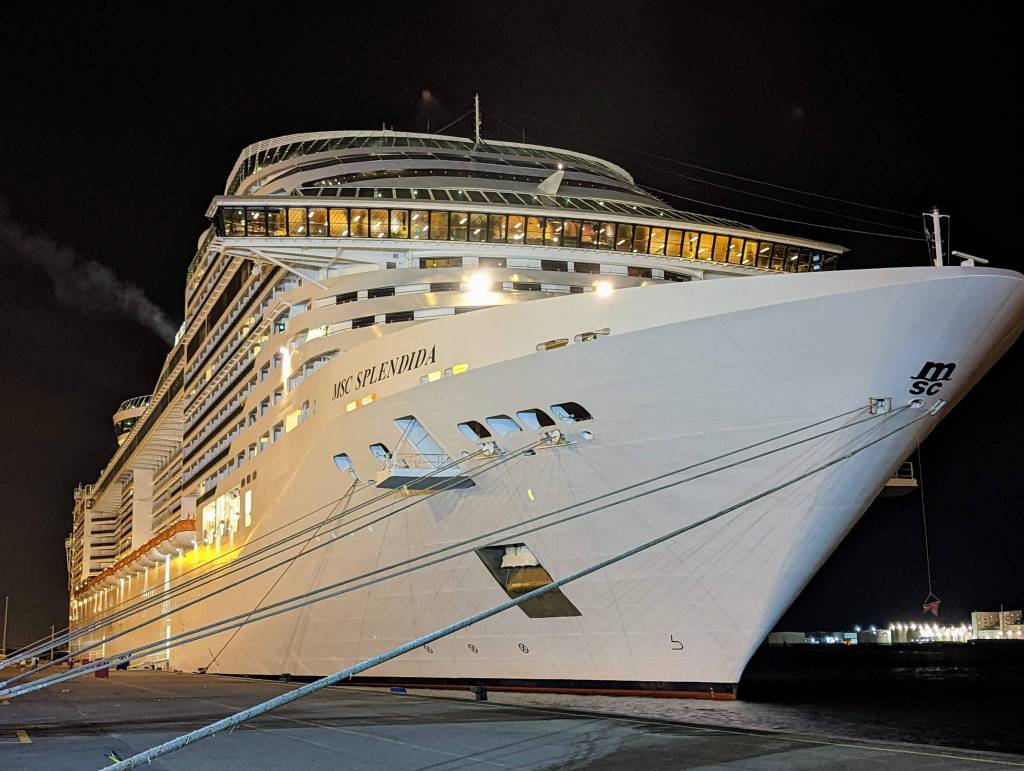
Red Sea Cruise with kids and grandparents
1. Pros
- No hustle. We were traveling as a big family: kids (5, 8, and 13 y.o.), us, parents, and grandparents. Cruise was ideal for traveling: no worries about renting a big car, cooking, and sleeping arrangements, – everything was covered by staying on a ship.
2. No seasickness by traveling on a big boat like this. (14 stories ship)
3. Kids often travel for free, – as we did.
4. At every stop visas and transfers are provided by ship.
5. Entertainment for big and small, included in price:
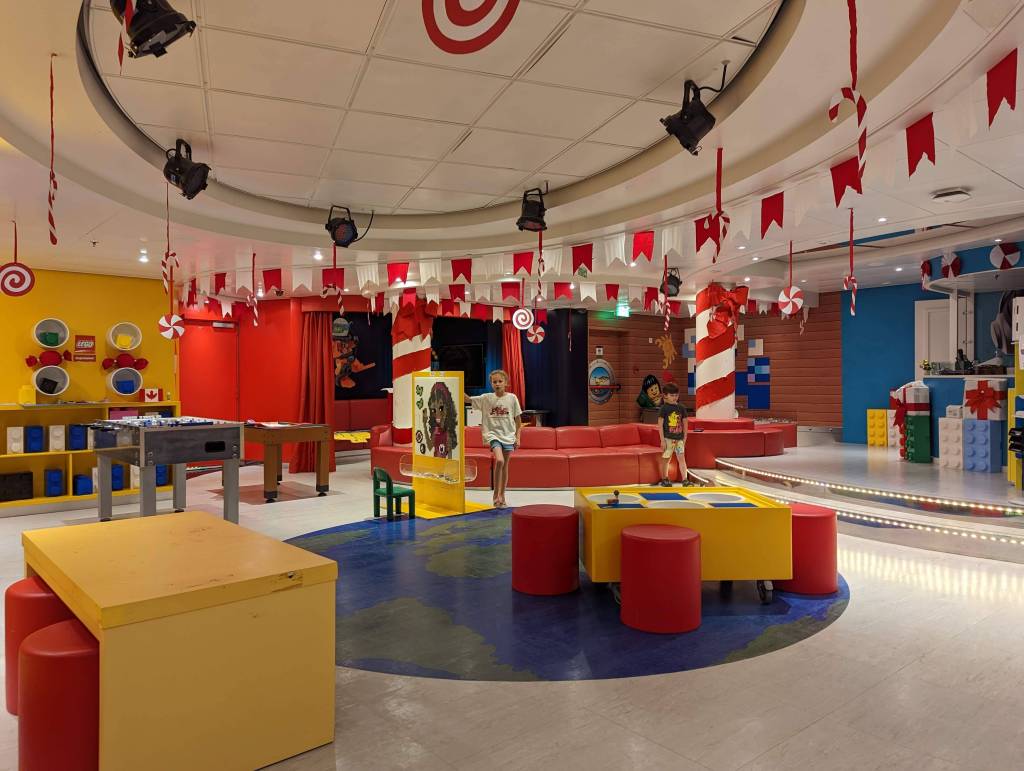
Clubs for teens:
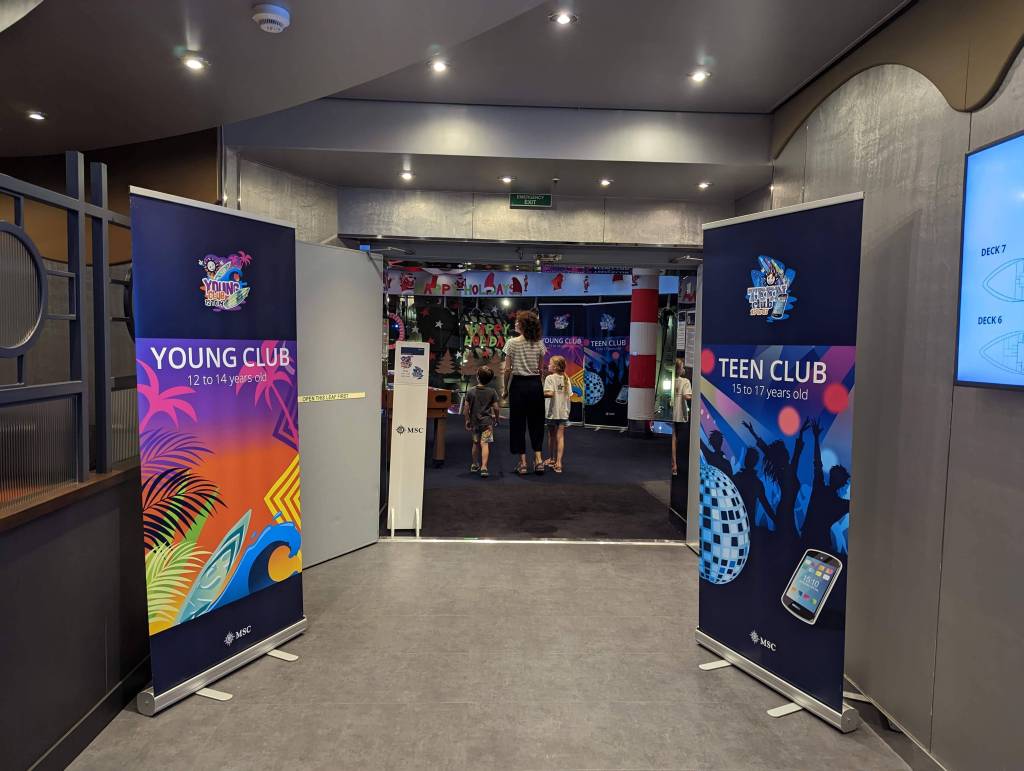
2. Starting point, duration, and route
We sailed with MSC. This is an Italian cruise line, headquartered in Verona. The starting point was the port of Safaga, Egypt:

We arrived in Safaga by taxi from Hurghada, where we had flown from France (our home). The cruise was for 7 nights, but we would have loved to sail longer, the price/quality ratio was excellent. The route:
- Egypt: Safaga, departure
- Jordan: Aqaba Saudi
- Arabia: Jeddah Saudi
- Arabia: Yanbu
- Egypt: Ain Sukhna (near Cairo)
- Egypt: Safaga, return:

3. Getting out of the port
In the photo below: these tough little tugboats helping big ships get out of the port and into the sea:
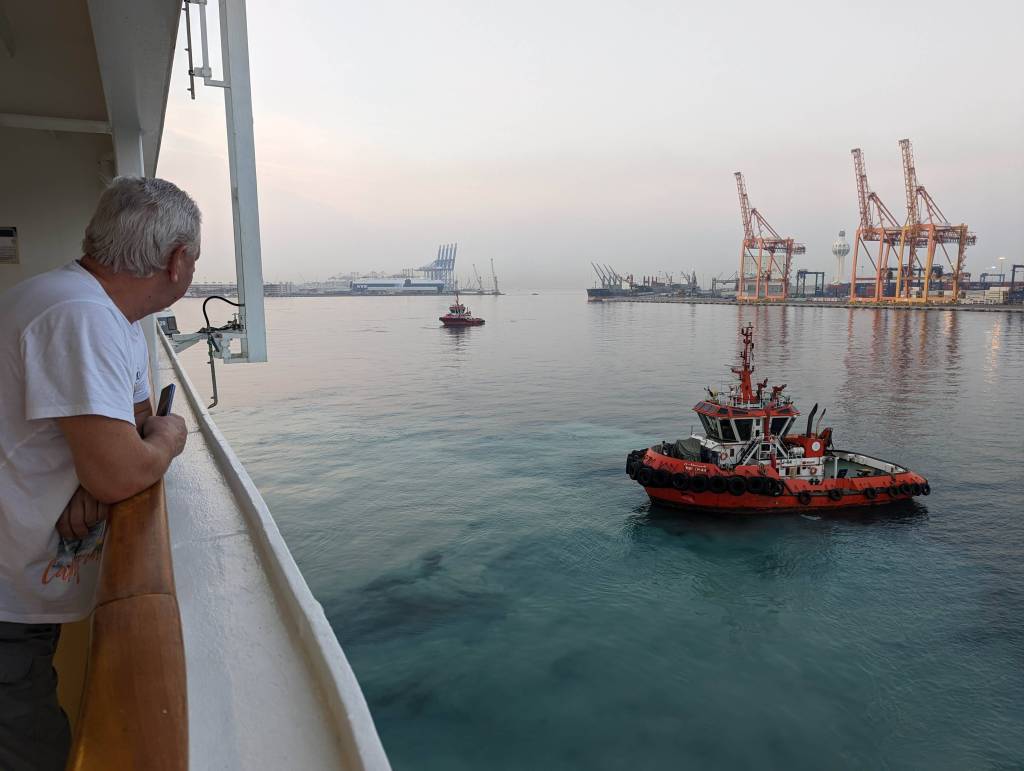
4. Schedule on the ship
On the photo below is the schedule of dining, entertainment, and everything else on the ship:
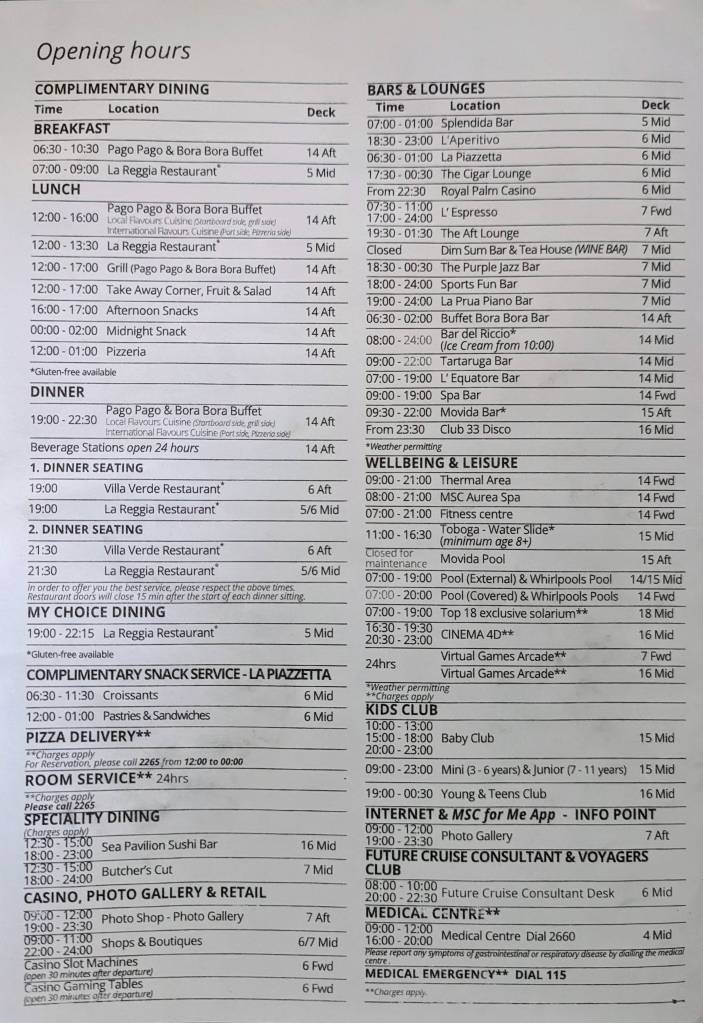
Plan of the ship:
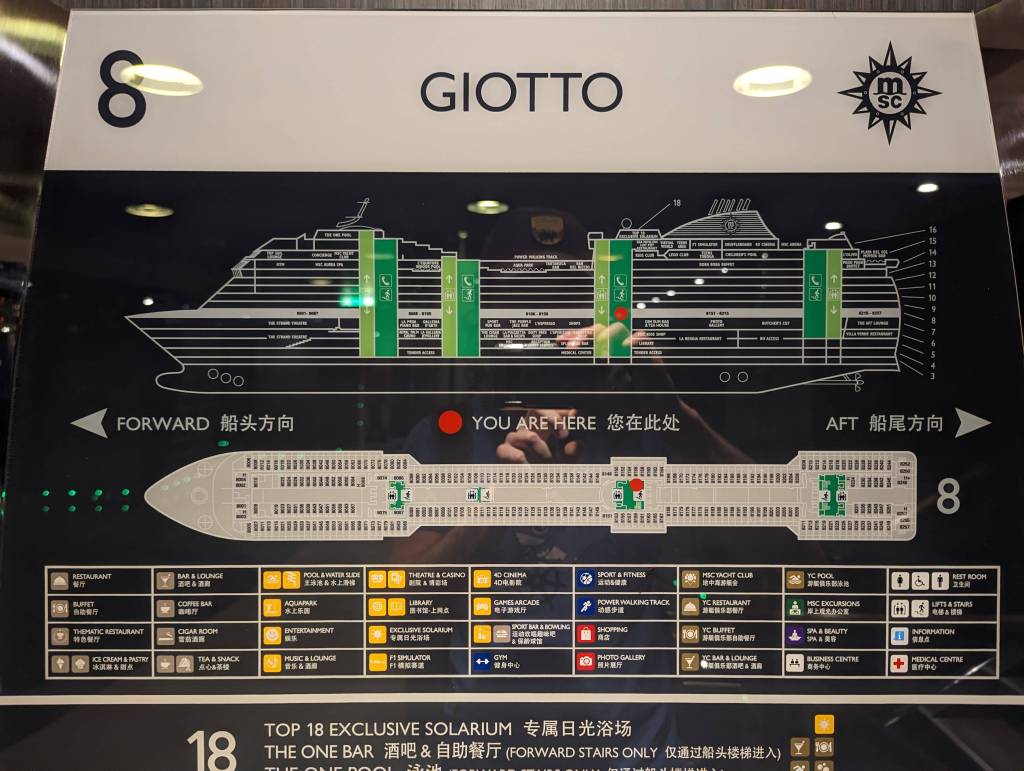
5. Interesting: 7 languages
All important announcements on the ship were repeated in English, Italian, Spanish, Arabic, German, Russian, and French. For example: “We have entered the port, if you want to get out, you need this and that…”
There were indeed many nationalities on the ship, and a little more than the rest – Italians, Kazakhs, and residents of Saudi Arabia.
6. Dining
We ate at the buffets and went to the restaurant once (included in the price). Everything was fresh and different: every day new fruits, fish, cheeses, pastries, etc.
The food was delicious, there was a lot of it and the surroundings were super clean. The ship was served by a crew from all over the world, and it was in the buffets where we could chat a bit. There were employees from everywhere, even from tiny islands like Mauritania.
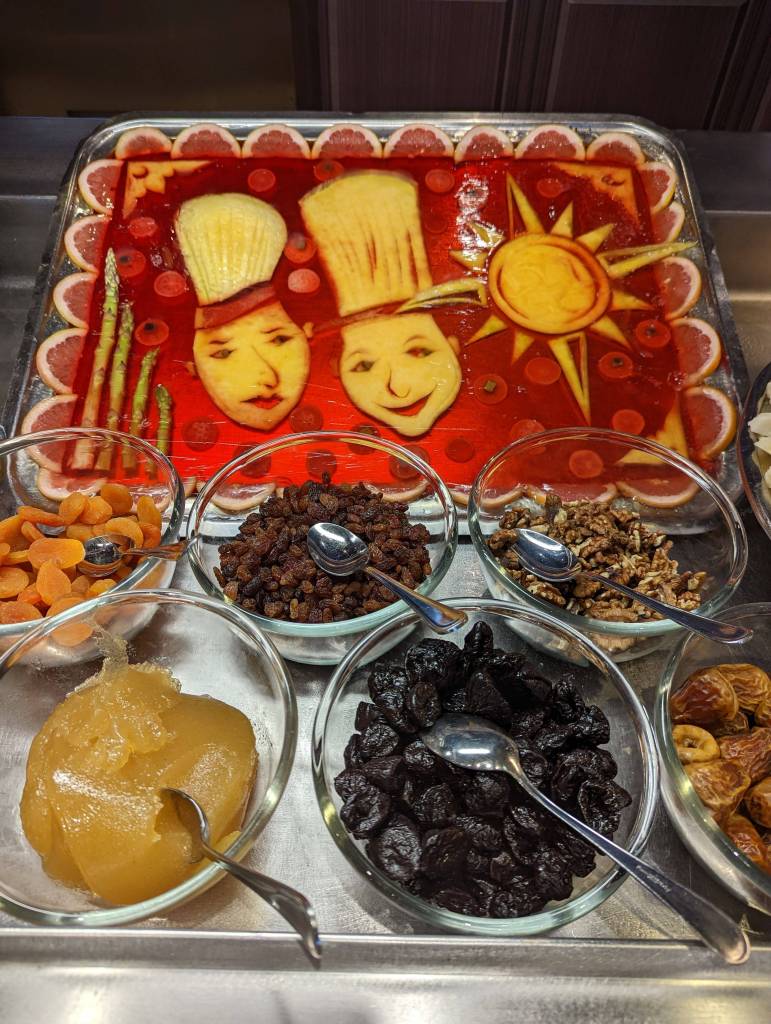
Almost all our family at the breakfast:
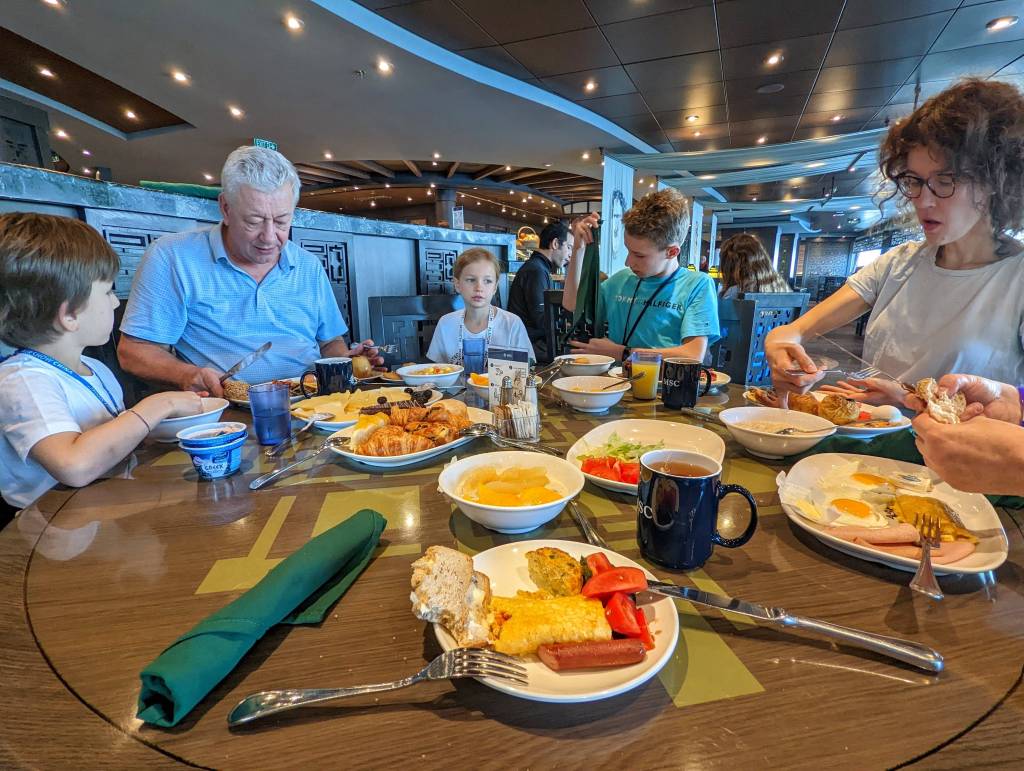
7. Space inside the ship
The only places where it seemed a little cramped on the ship were the cabins and corridors.
But this is not a problem, since you spend all your time on the upper decks (where there is food, swimming pools, etc.), and you only sleep in the cabin.
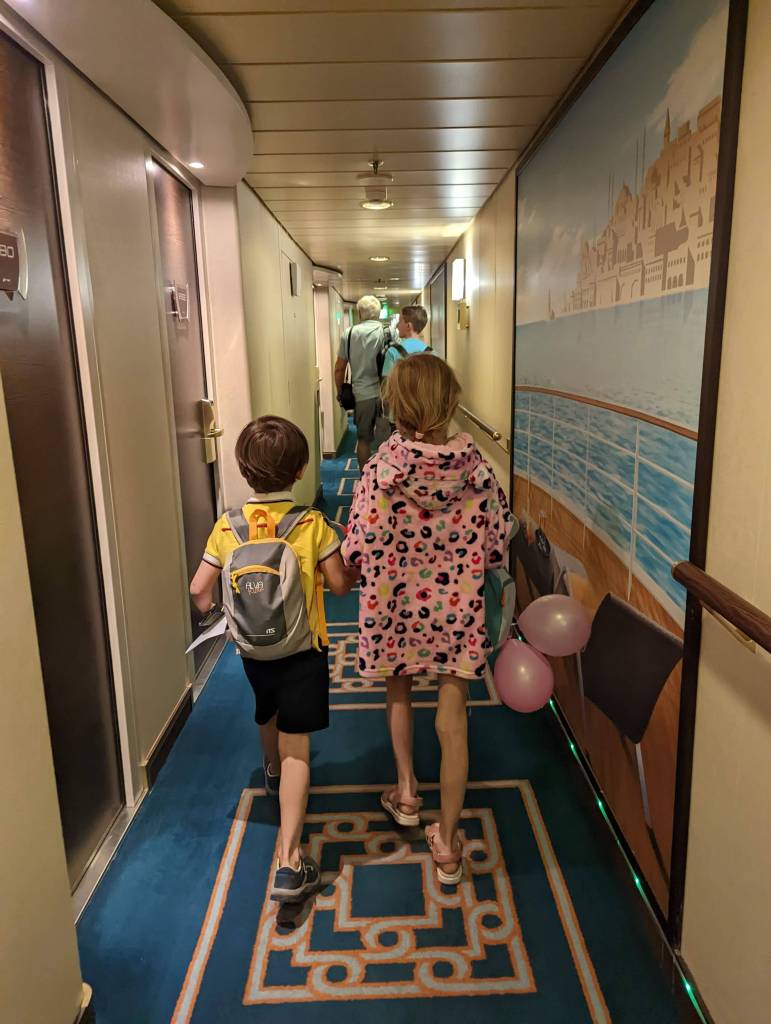
8. Cabins for families with children and how is it, to sleep on the 8th floor of the ship
Sleeping on the ship is like sleeping on a train: it rocks rhythmically, and we could even hear the engine humming below, though it was the 8th floor!
We had a balcony, and the floor there was a little sticky, as we later realized – from sea salt. (The Red Sea is the saltiest sea of all the seas)
Typical cabin for 4:
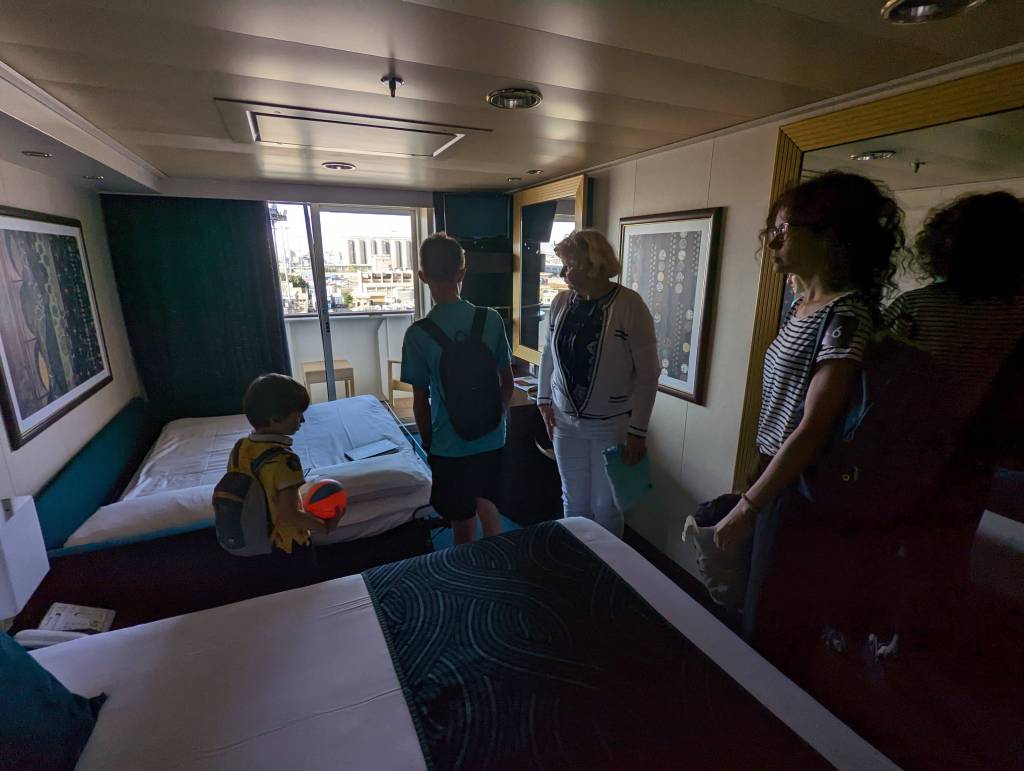
A huge cabin like the one in the photo below is an exception. It is designed for people with disabilities and can be booked if no one reserved it:
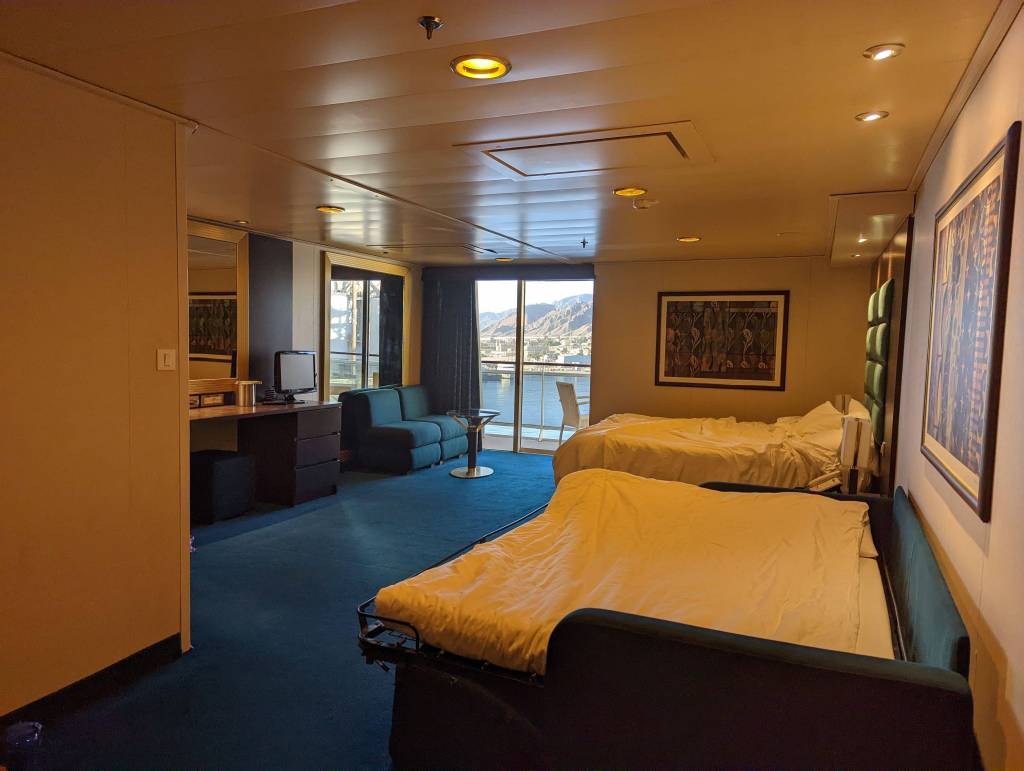
Typical bathroom:

9. Evening entertainment we enjoyed
The ship had bars, karaoke, casinos, and many other entertainments. We and the children visited shows, different every night. They were reminded a lot of Cirque Du Soleil, but much shorter.
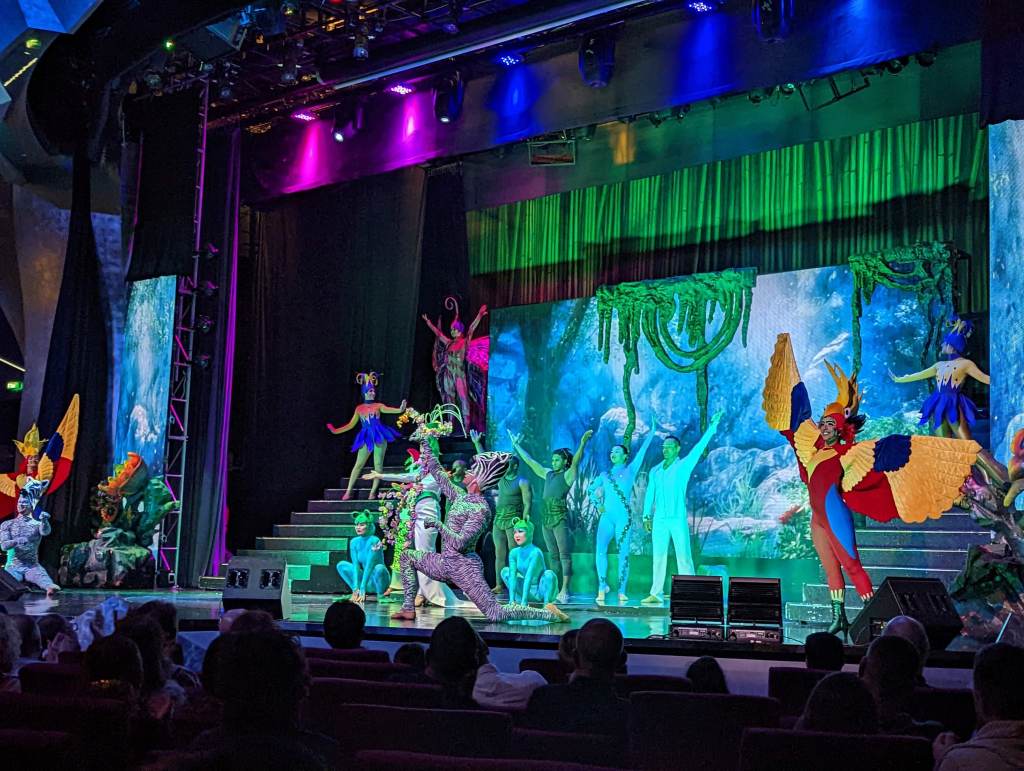
10. Water activities on the cruise
There were 2 swimming pools for children: one outside, one inside, with seawater, paddling pools, several jacuzzis, and a slide:
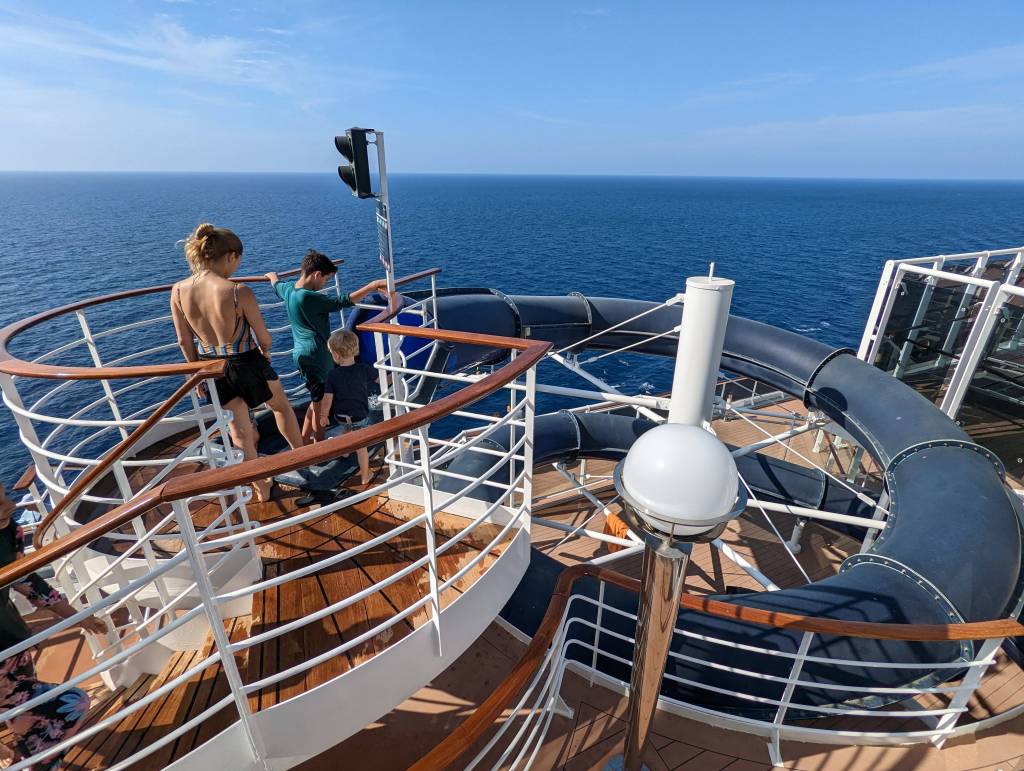
View on the water activities from the top:
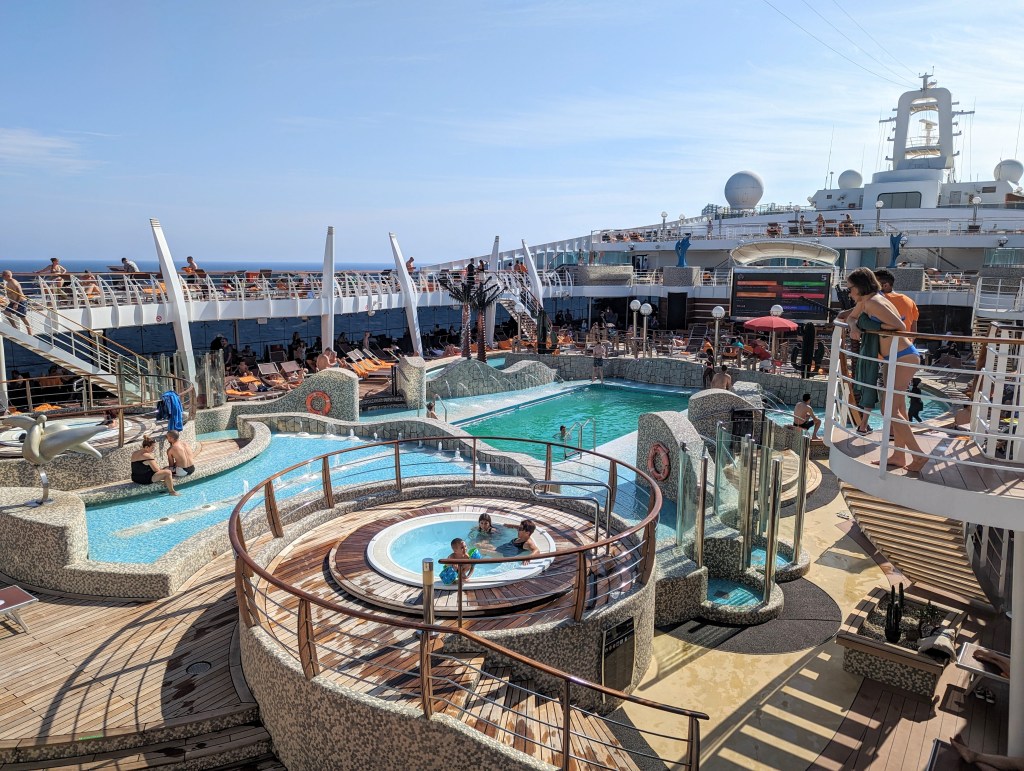
11. What is it like, the Red Sea?
The Red Sea is very blue, the name comes from the algae Trichodesmium erythraeum: when they die, they turn red and the water takes on the same shade as them.
When waves came from the engine propeller, the water was blue, like in Hawaii:
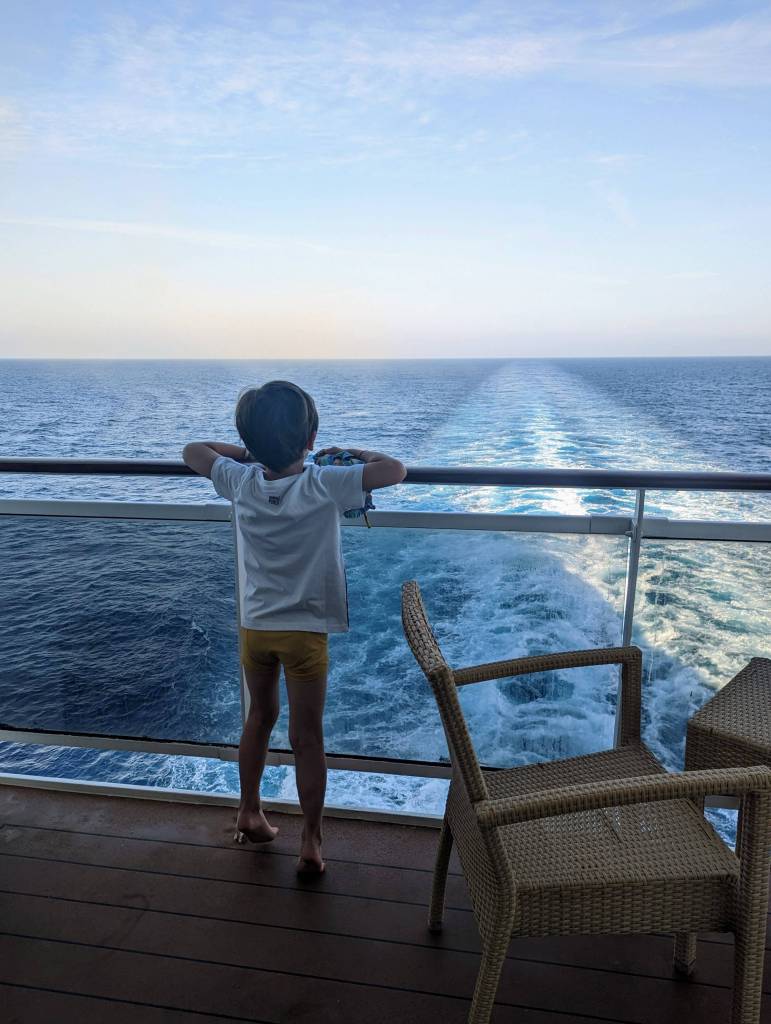
12. How does it feel to be in the middle of the sea?
The Red Sea on the map is narrow and small, but in reality, when in the middle of it, on a ship, it is huge! Like an ocean, without edge.
And at night it’s like being inside of a black ball: can’t tell where the sea, where the sky, everything merges. There are only stars, and blackness, without borders.
No birds are visible either, since you are far from the shore. We saw fish when we were in the port: small ones swim in huge schools, like in the movies. And there were needlefish, thin and long.
13. Temperatures in winter in the Red Sea
When we were at sea, not in ports, it was warm during the day, with no heat, like on the shore. In the evening it gets dark early and quickly since it’s winter (December)
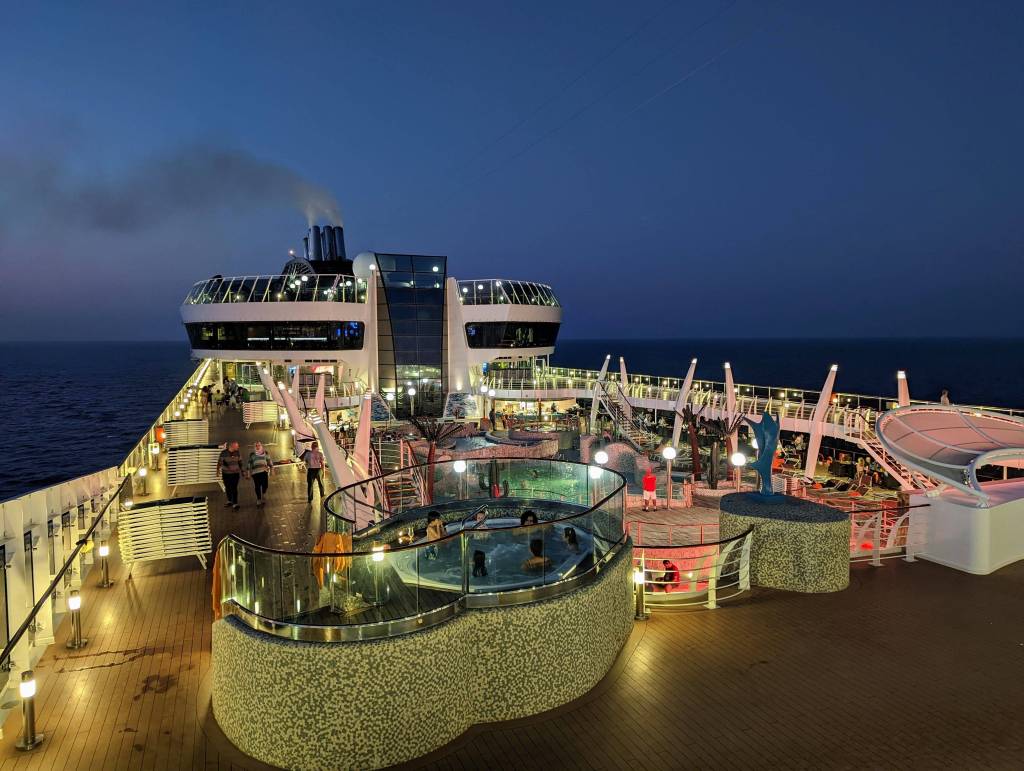
14. Interesting: pilgrims
We met pilgrim men (we realized this later) on the ship, wearing white towels. We wondered how they were allowed into Saudi Arabia when there was a stopover. It is very strict in terms of clothing. And here are bare bellies!
It turned out that while the Muslim pilgrimage is going on, you need to be in the following clothes: two large white towels. According to the rules of Hajj, they should not be connected by threads.
Hajj, pilgrimage to Mecca – is the main event in the life of a devout Muslim.
15. Cruise with kids: first stop, Jordan
Arrived at the port of Jordan, the city of Aqaba:
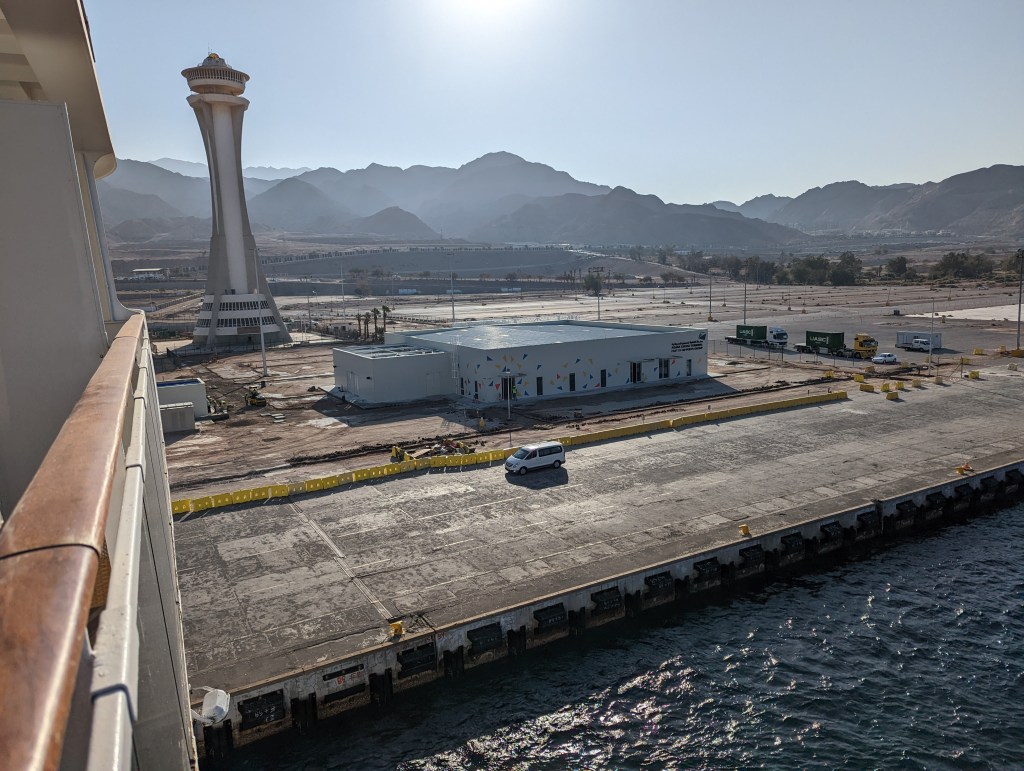
Nature in Jordan was like in Egypt, but not so littered and more cared for. We liked a lot the royal family of Jordan, especially Queen Rania: she has progressive views and protects women’s rights:
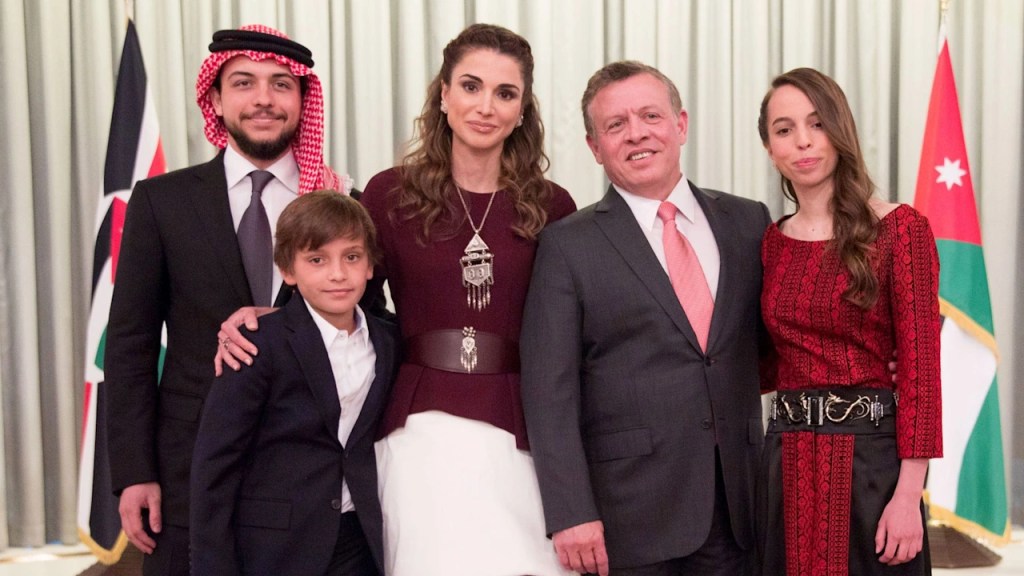
The main attraction of Jordan is Petra, one of 7 Wonders. The journey from the port and back would take about 5 hours, plus time to see the city. But… that day there was a strike on the highway, so we had to cancel it.
Below in the photo is the most expensive apartment complex in Aqaba city, overlooking the sea and Israel. It is located directly on the opposite side of the shore, where the tallest buildings standing by:
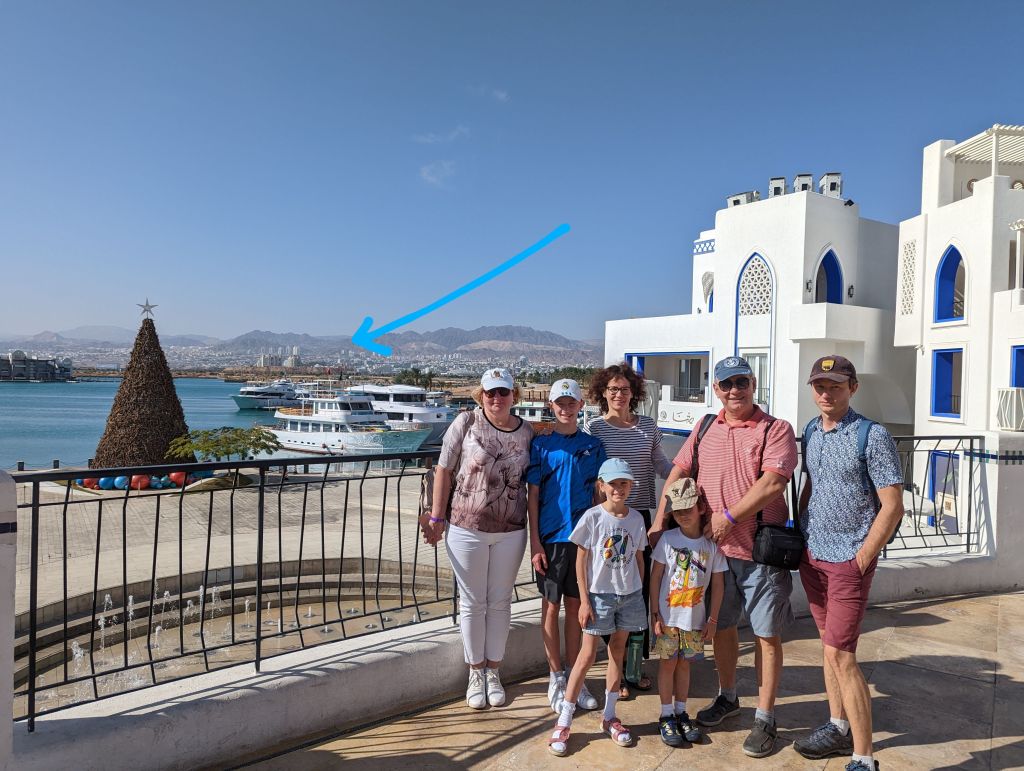
Of all the things we saw in Jordan, the children liked cats the most:
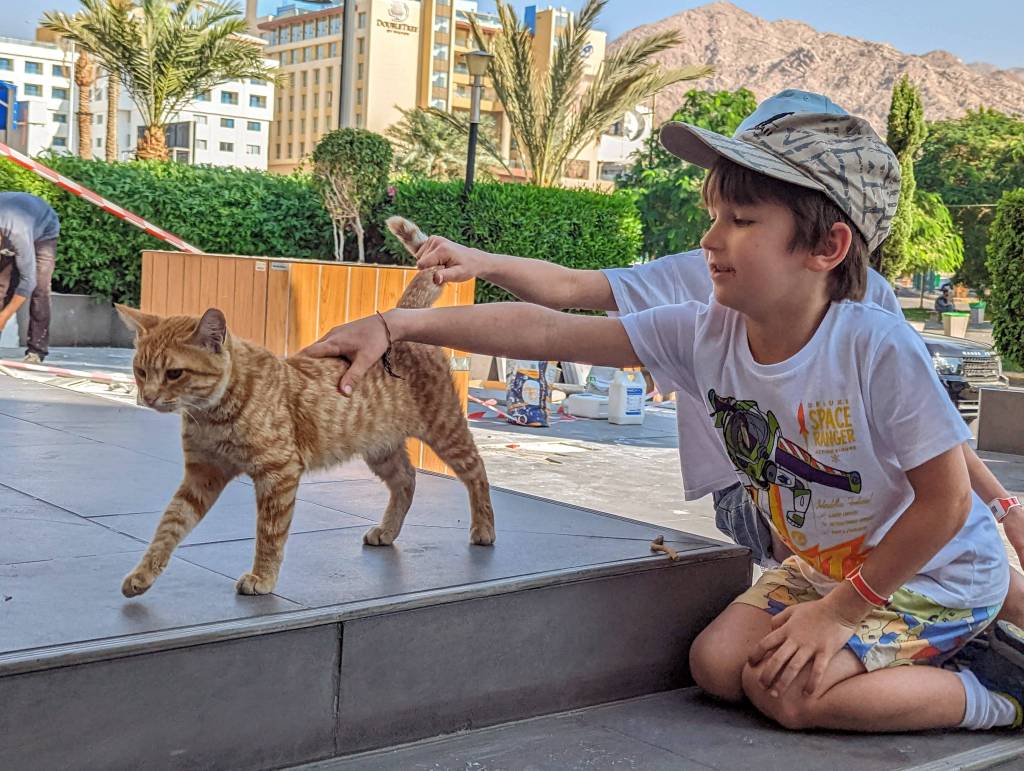
Pictured below: a local family relaxing in the shade by the Red Sea:
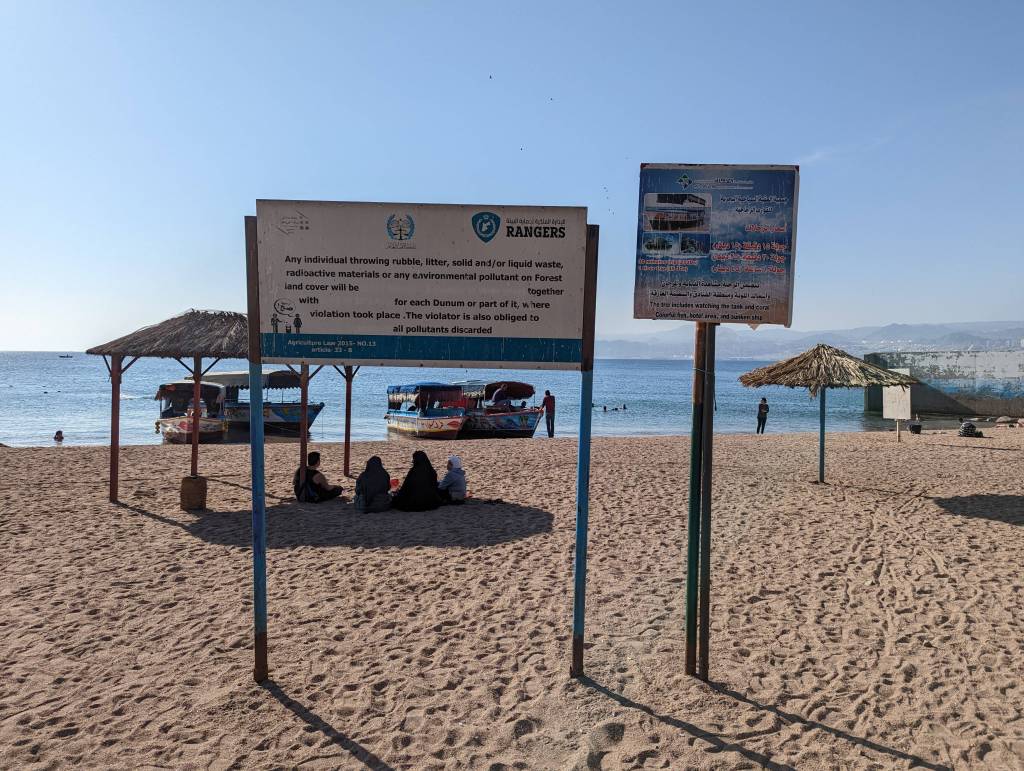
16. Next stop: Saudi Arabia, Jeddah
Saudi Arabia gets its name from the ruling Saudi dynasty and “Arabia” comes from the word “Arabs”. Saudi Arabia is the birthplace of the Prophet Muhammad (city of Mecca) and the cradle of Islam.
Only Muslims are allowed into Mecca, which is also the third-largest city in Saudi Arabia. (At the entrance there is a checkpoint, they check documents proving that you are a Muslim).
Only in 2019 did Saudi Arabia begin to allow tourists in, before it was inaccessible to them.
On the photo below: Jeddah, the 2nd largest city in the country and its economic capital:
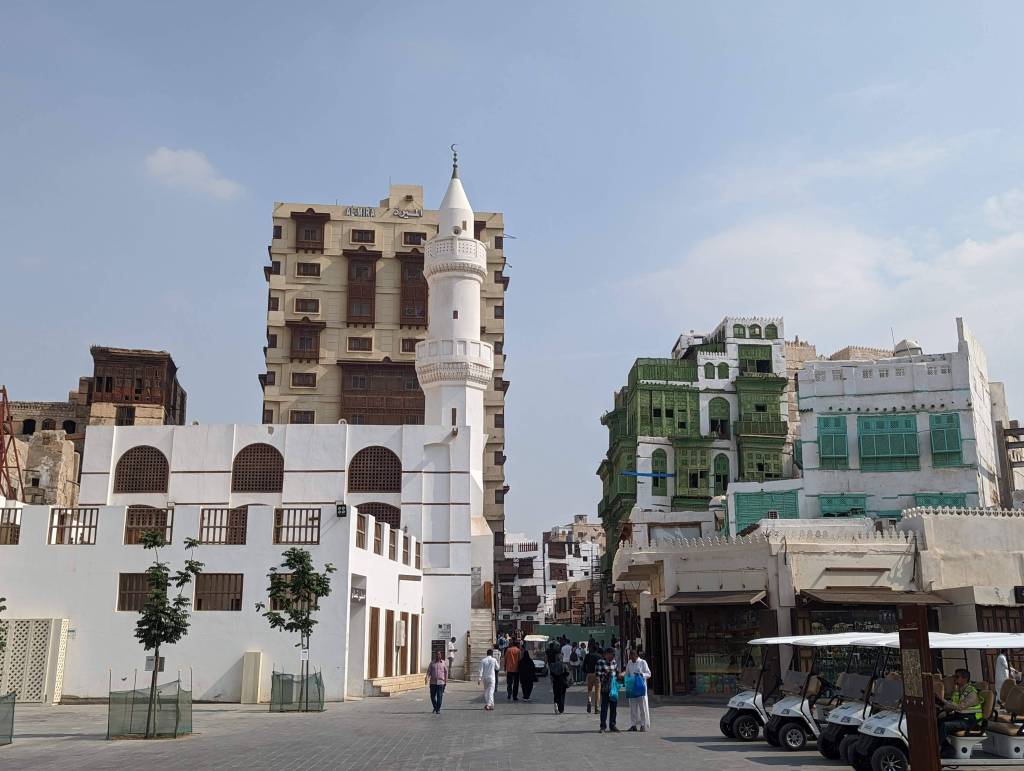
The locals, just like in Jordan, are serious, almost no one smiles. This is the custom.
In the photo below: incense and myrrh, are sold everywhere:
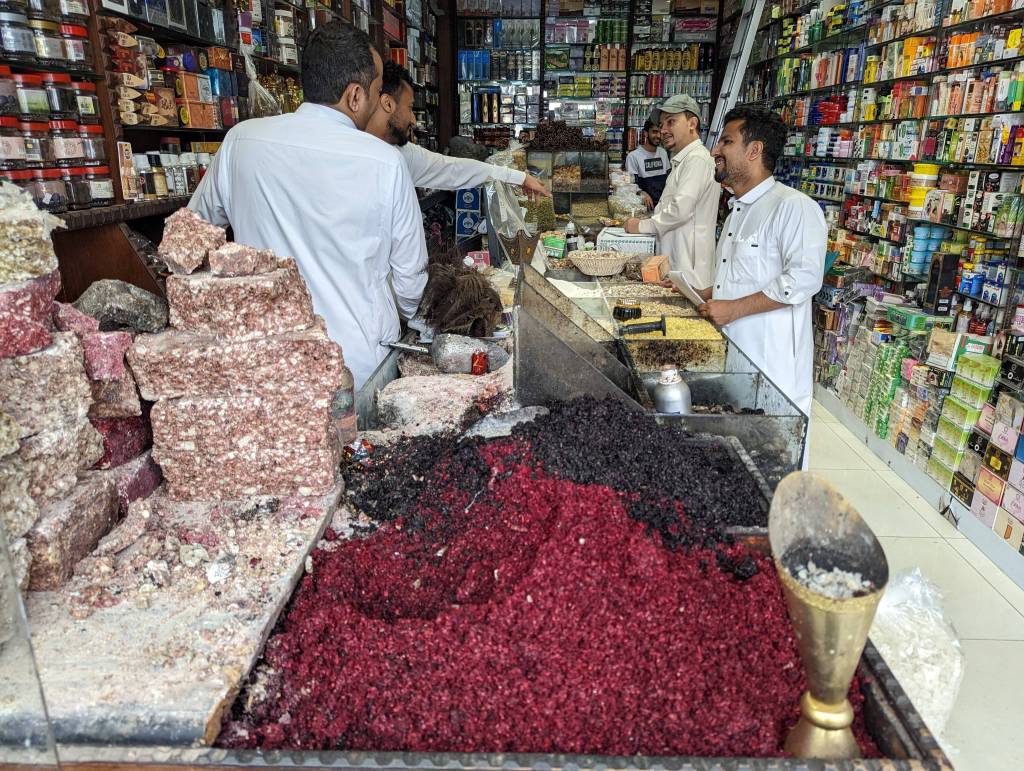
Saudi Arabia loves its traditional clothes: long white robes for men (pictured above). In Arabia, about 40% of foreigners. Many Pakistanis work as drivers, different kind of workers:
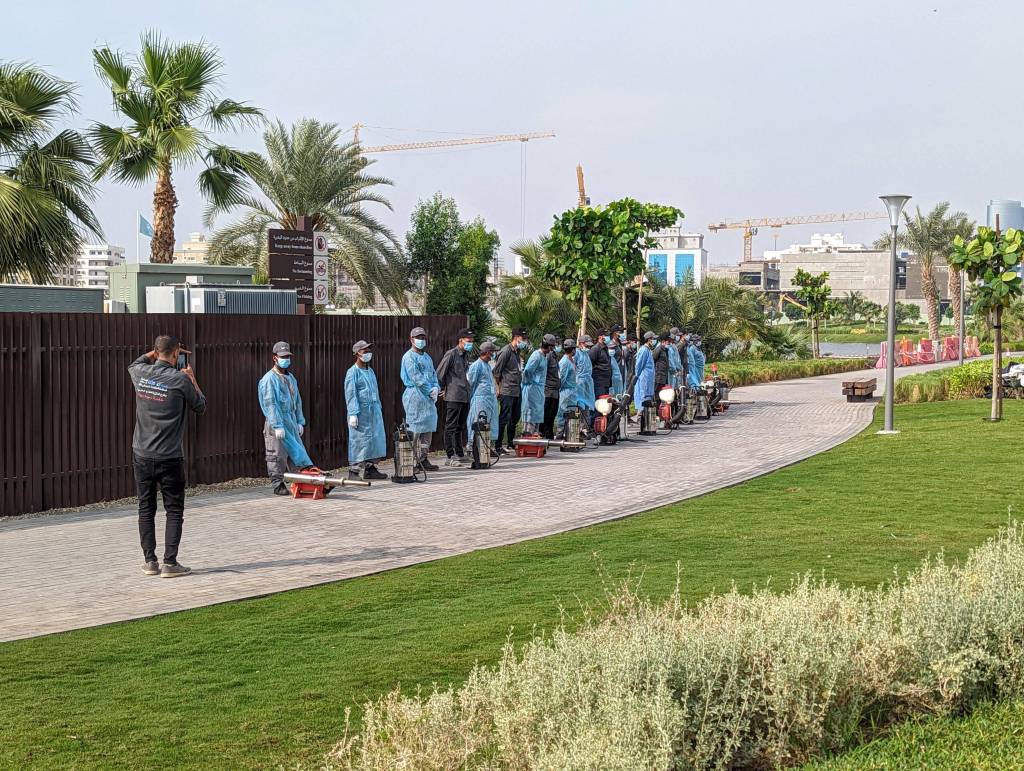
There is no toilet paper in local bathrooms, but hygienic showers. And also special foot baths for washing before prayer. Once we were in the shopping center when the prayer began. Everyone was on mats facing Kaaba (Mecca). Men are in front, women behind them.
In the photo below: a sign of the prayer area:

Below: one of the attractions of Jeddah, the Floating Mosque:
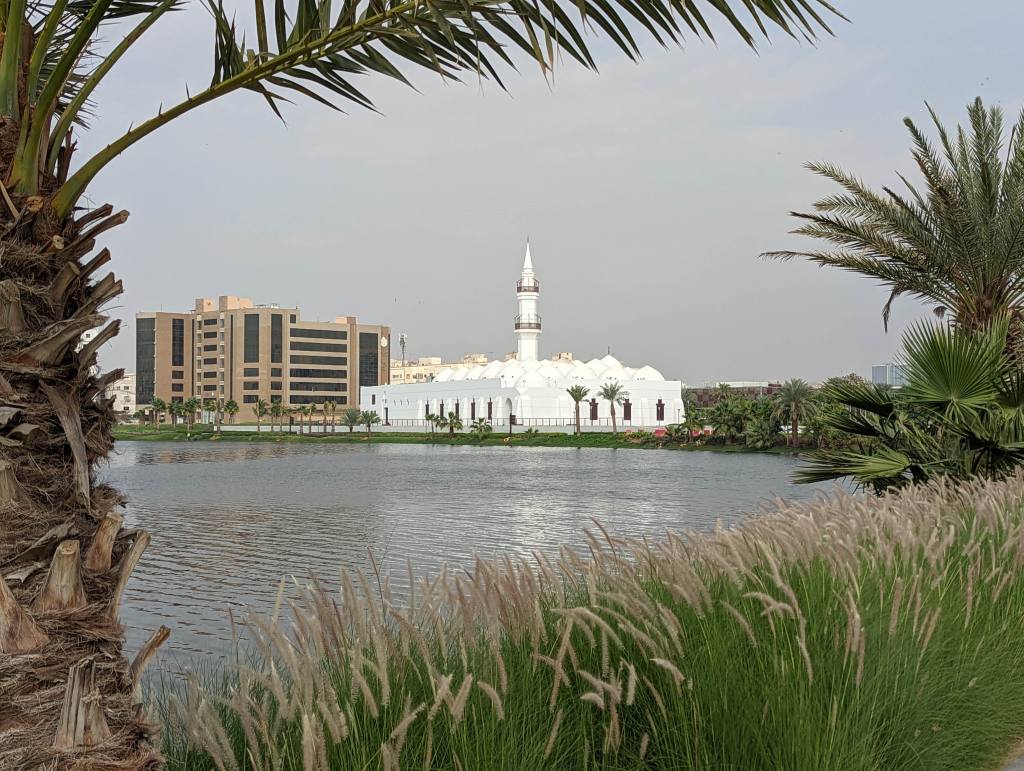
Pictured below: local supermarket:

New buildings in Jeddah were mixed with old ones that are being restored:
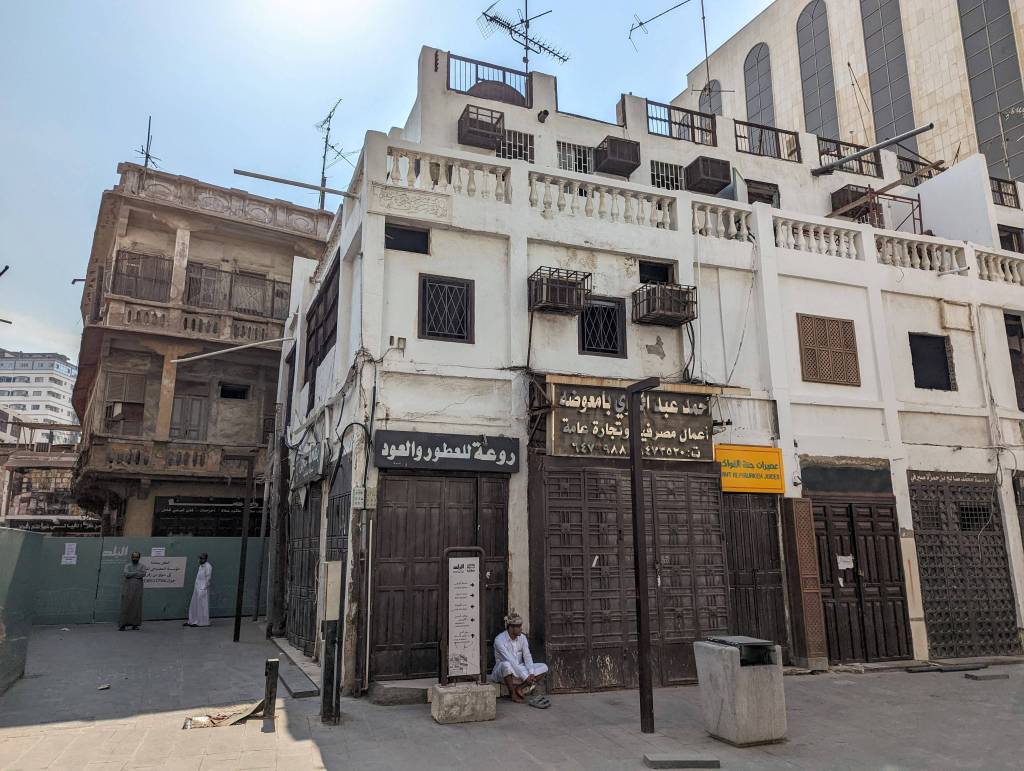
Pictured below: local cats:
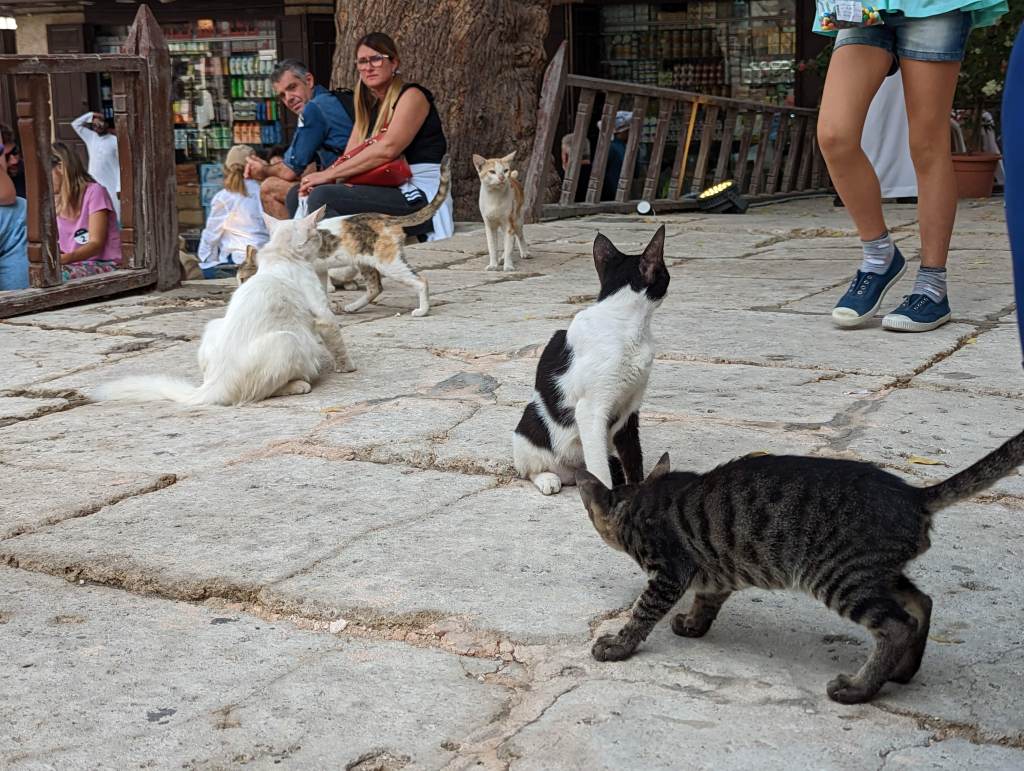
17. Our favorite stop during this cruise: Yanbu, Saudi Arabia
In the video below: how travelers were greeted in the historical part of the city of Yanba:
Pictured below: immediately after passing through the gate Arabic coffee and dates were offered:
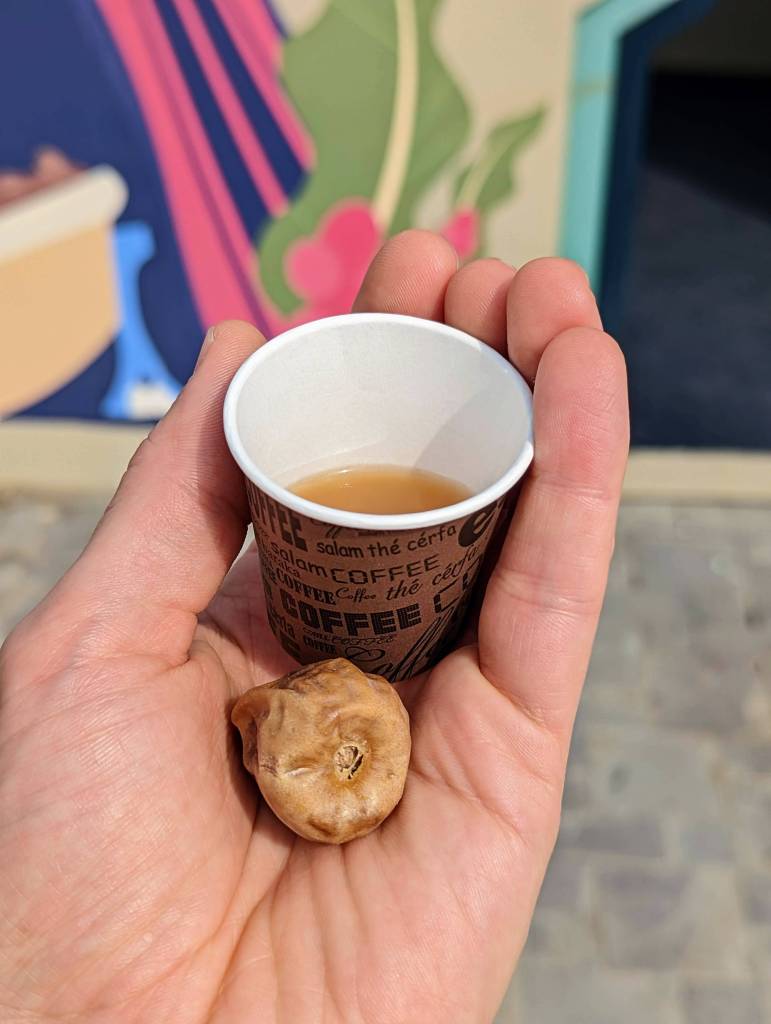
In the photo below: the local coffee shop. We went there twice for ice cream for children and coffee. Men and women sit separately (if they aren’t relatives), this is the tradition.
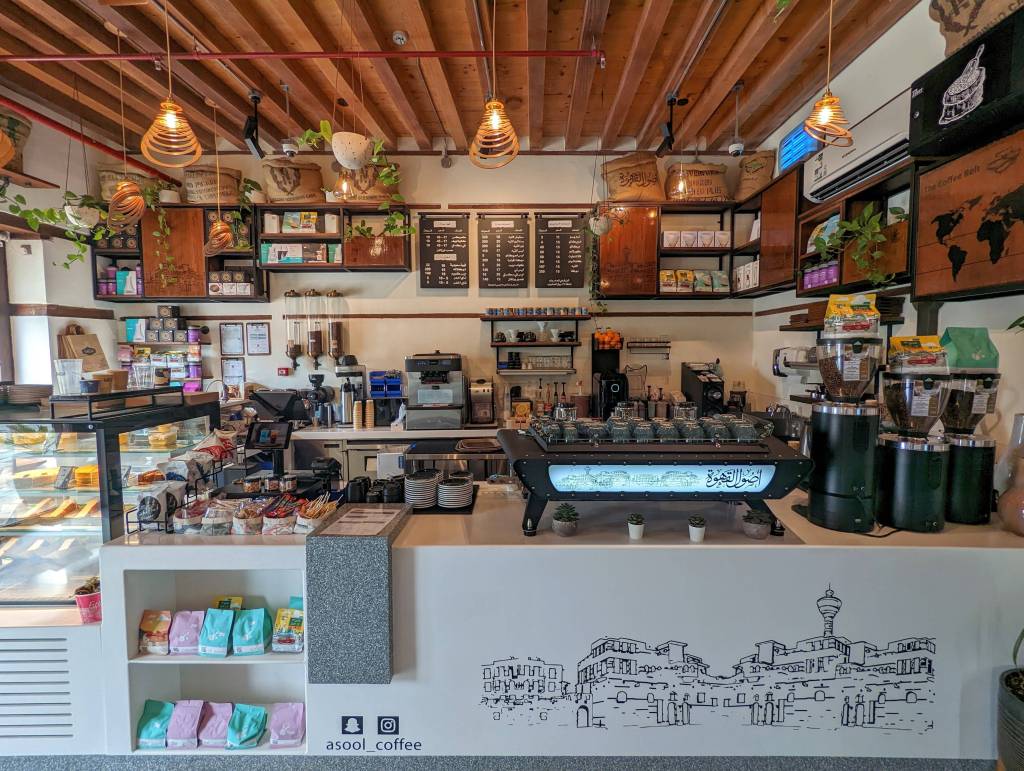
View of the Yanbu Historical District, if you climb a little higher:
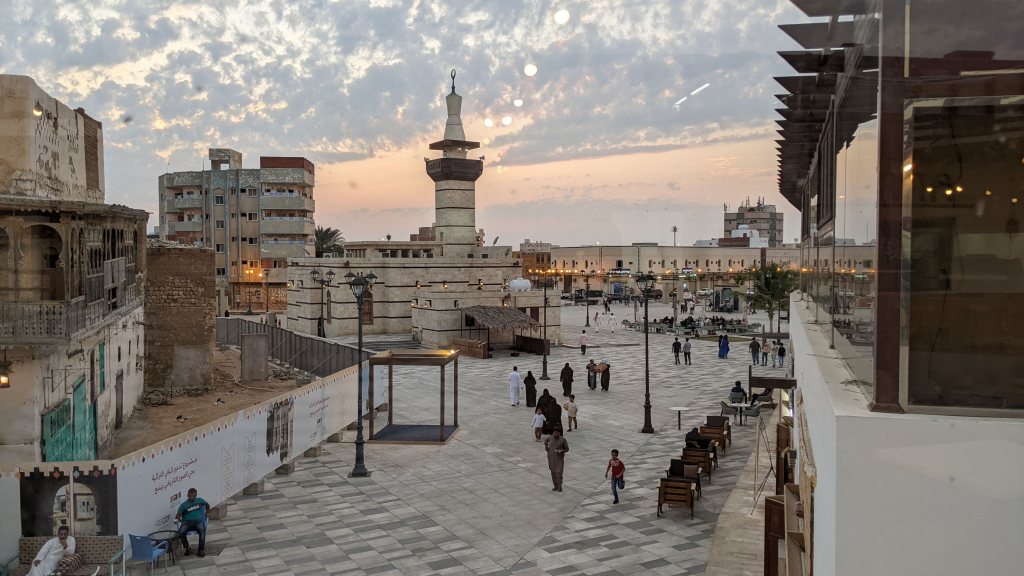
Saudi Arabia has not always been a wealthy country. After the discovery of oil in the 70s, Arabia began to develop incredibly rapidly. You can still often find places like this:
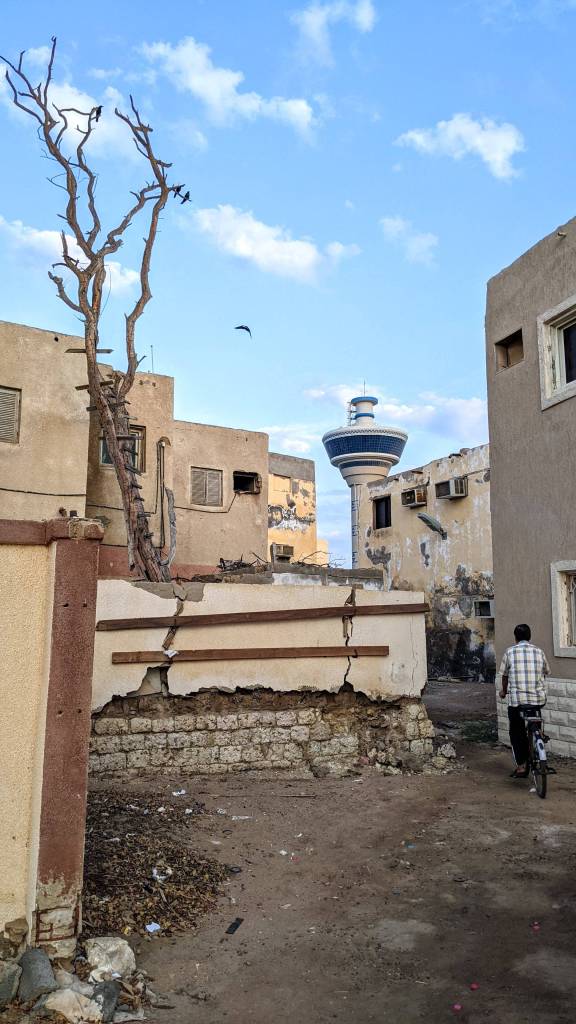
The government trying to revive ancient buildings. They are unusual for us: balconies made of carved wood, thick walls, high ceilings, and small windows to protect the house from the incredible heat:

Pictured below: guard cat on duty:
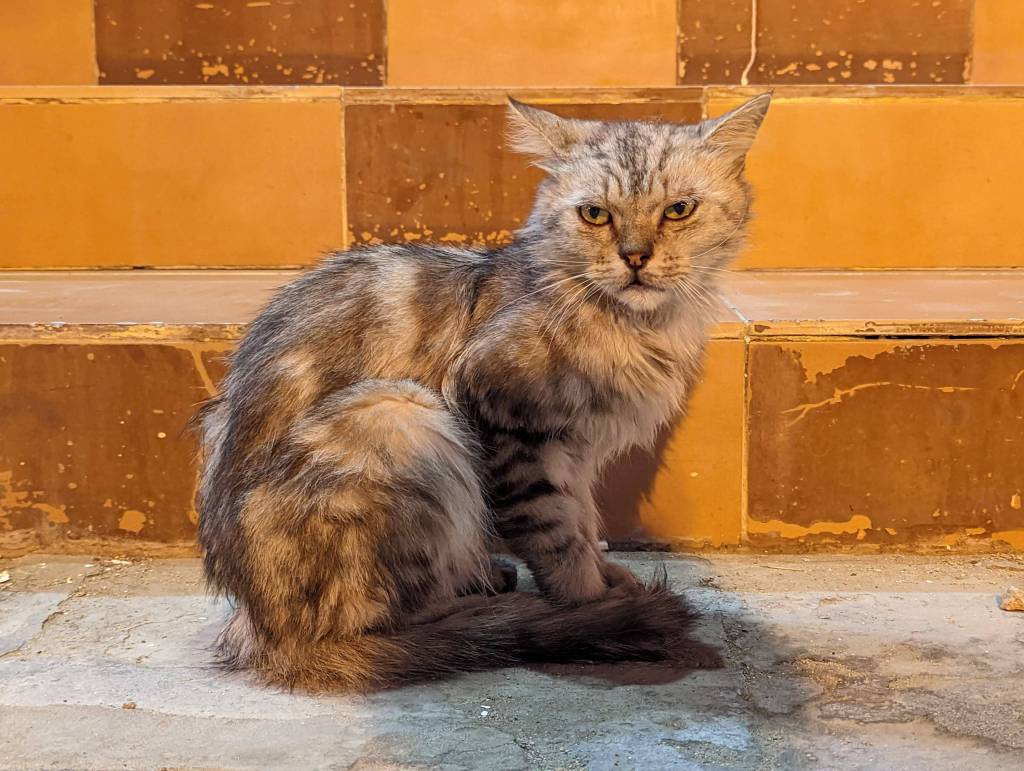
Pictured below: park near the port in the evening, local families are having picnics, children playing, and the atmosphere is very nice:

And the last place that we visited was the Night Market, 500 y.o. Doors open from 5:00 p.m. to midnight, allowing strolling in the cooler temperatures:
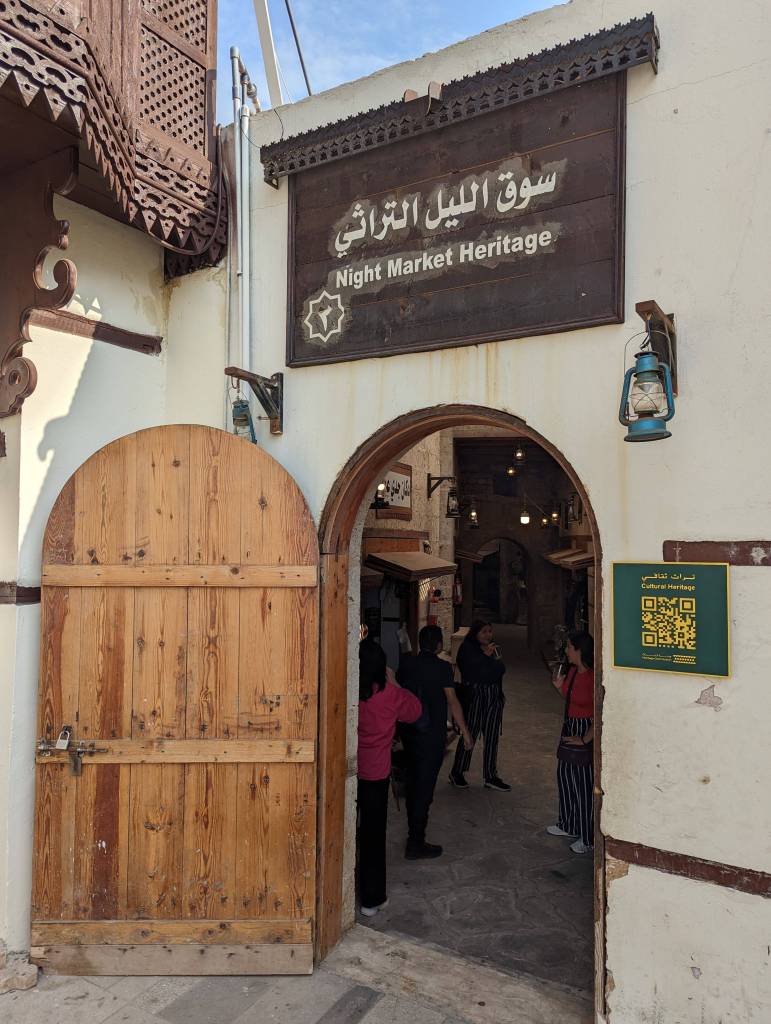
Market from the inside, here we bought myrrh, an aromatic resin:

18. Stop: Egypt. Cairo, Pyramids and Tutankhamun Museum
The port of Ain Sukhna, where our ship stopped, was 2 hours from Cairo. It was a great opportunity to spend time there with our 14 y.o. son. He wanted to see the pyramids and the museum with the mask of Tutankhamun.
We booked a tour on the ship (transport + guide). We had a small group of 12 people, and the guide translated into Italian, English, and German.
As it turns out, Egypt is the third most populous country in Africa, with 109 million inhabitants. 10% of them are Christian Arabs, like our guide.
Below: Cairo Egyptian Museum or as we called it: “Tutankhamun Museum”:
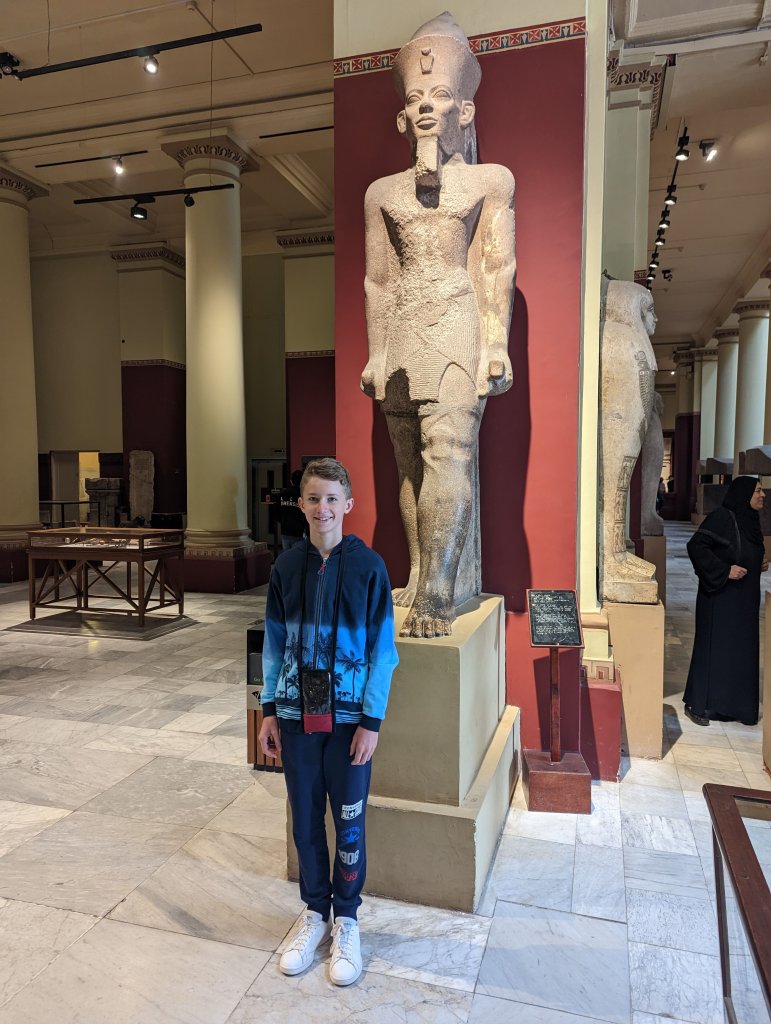
The “Tutankhamun’s Gold” could not be filmed in the museum. But you can believe me, it was the most beautiful place in the museum!
Cairo is dusty and the air polluted with smog from cars and factories. The city has more than 20 million inhabitants.
Nile river boat ride
After the museum we went for a ride along the Nile, it was not hot, 18 degrees:
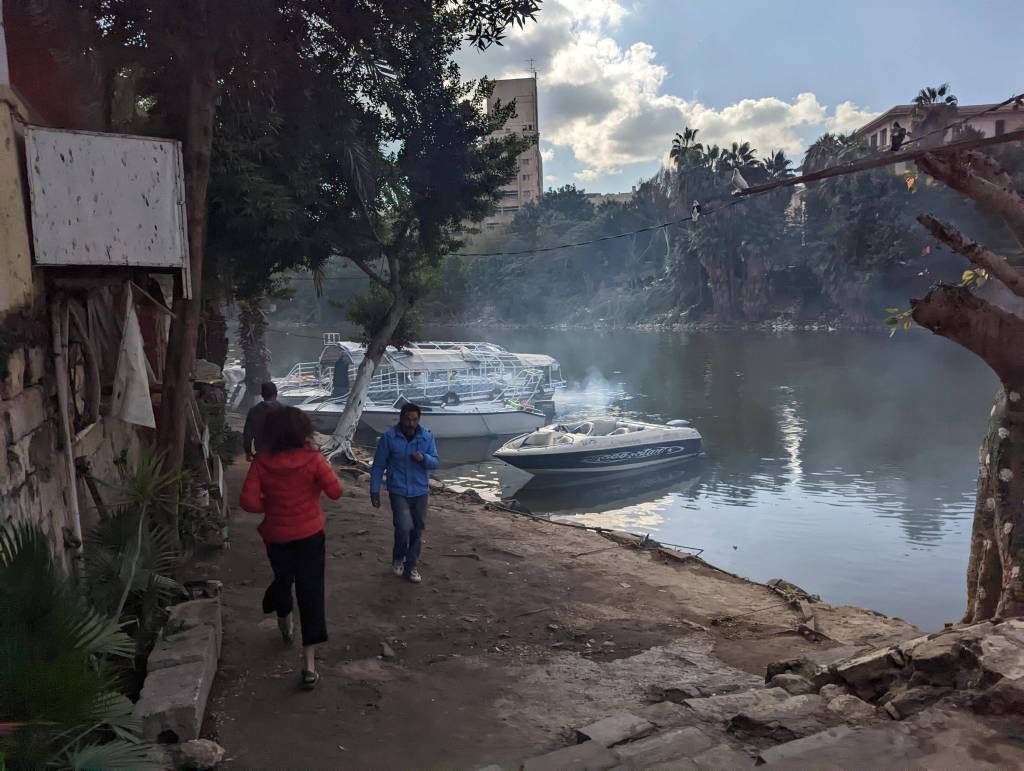
Our captain:

The Nile was dirty in the city, with garbage floating in the water. There also were plenty of unfinished buildings, (bought and already occupied flats).
This is the center of the capital:

In the short video below: some of the most expensive apartments in Egypt are located on the Nile River, in Cairo. You can see that some apartments are still under construction (never-ending) to avoid paying taxes and fees:
The last part of our story – the Pyramids of Giza:
Pictured below: driving through Cairo, on the way to the Pyramids:
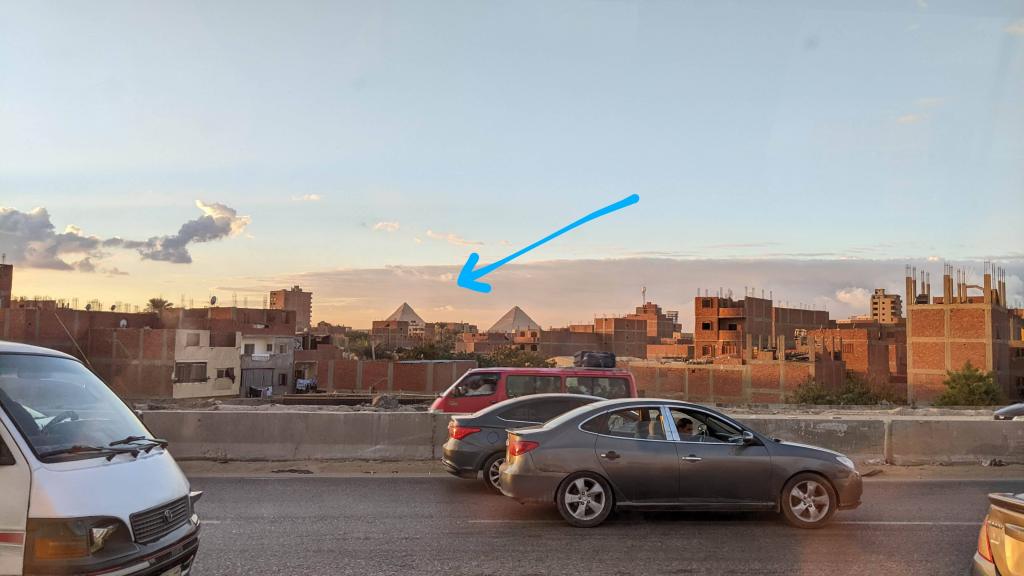
Almost there:
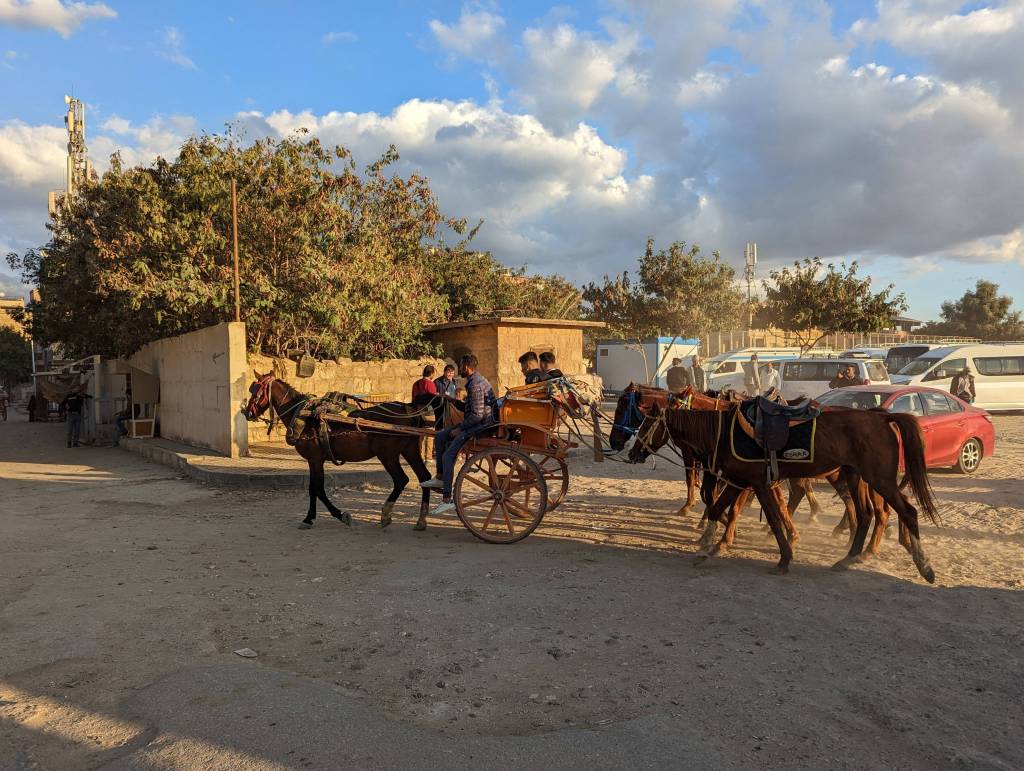
The Pyramids of Giza are sandwiched between Cairo and the Sahara Desert.
It’s interesting to see them from the outside, listen to the story, and that’s… it. You can go inside through one tiny tunnel. And all around there is desert, dust, and pushy, sometimes aggressive sellers.
Plus, there is nowhere to go, except Sahara, and vendors won’t let you pass, they’re very persistent. On the other hand, tourism is their only income. As well as in the country in general: the main income is Suez Canal and tourism. Video about the Pyramid of Cheops:
In the photo below: a local family is having lunch, stray dogs are waiting for leftovers:
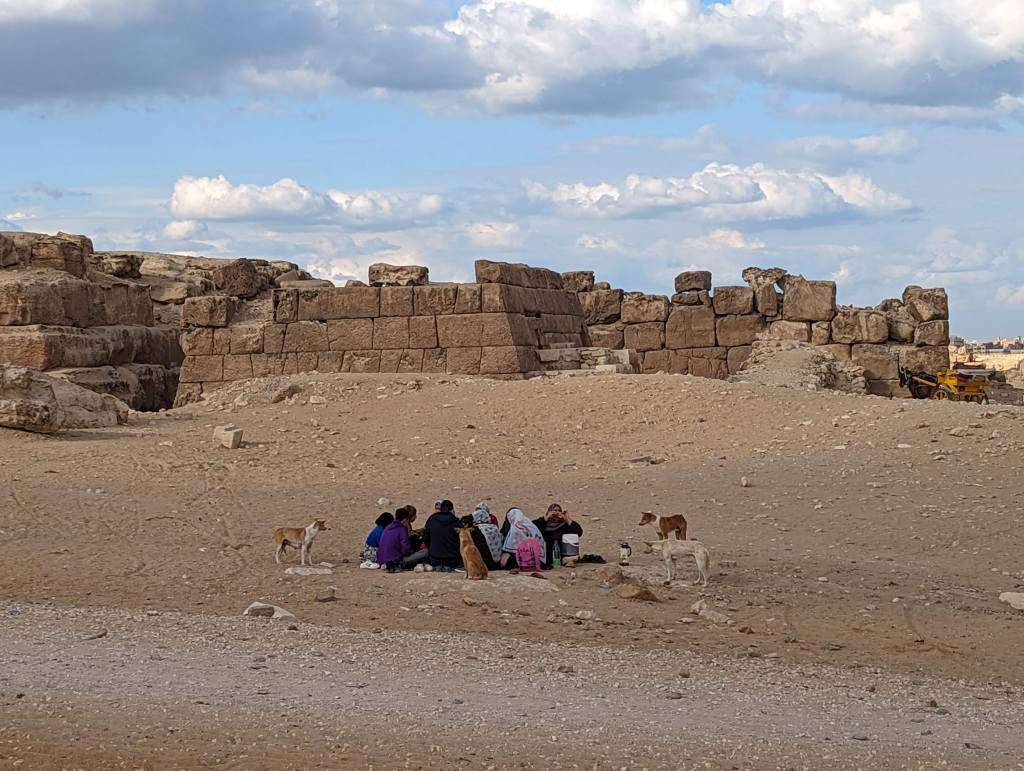
In general, we enjoyed this trip with our teenage son, Artem:
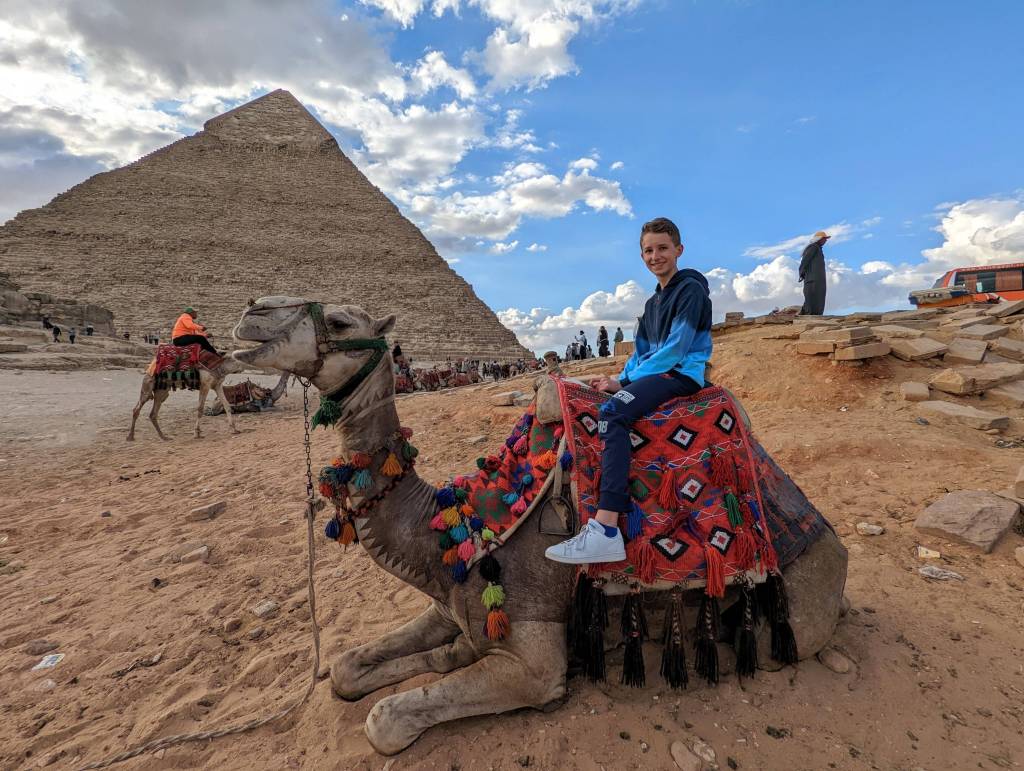
Camels are often the only income for locals, locals take care of them and mark with unique shaving (patterns on the neck and head). This is to protect animals from being stolen (you can immediately see whose animal it is):

Conclusion
After the trip, I wanted to know more about the Middle East. There is sparse nature, a harsh climate, but a distinctive culture, and locals really love their land.
Thank you for being with us!
What else to read on our blog:
Traveling in Switzerland, budget-friendly, family-friendly places:
Beautiful Canada:
Hidden places in Florida:
One of the top thing we miss from America, nature:
